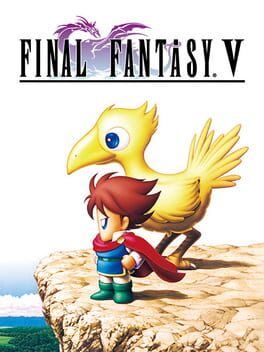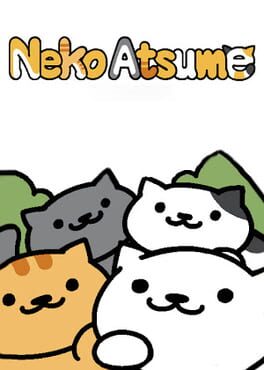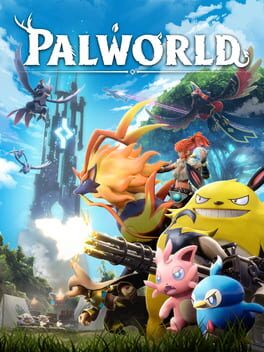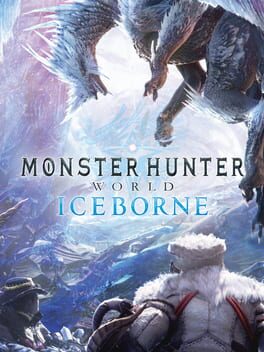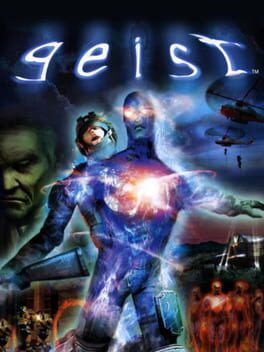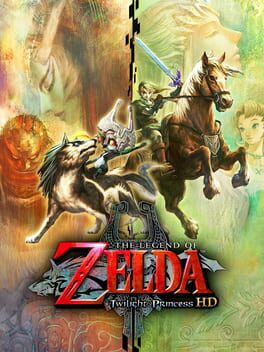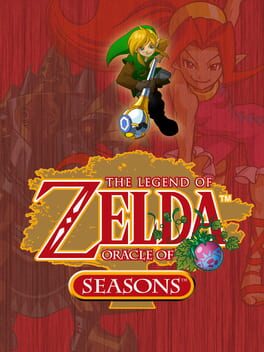Diggity45
56 reviews liked by Diggity45
Final Fantasy V
1992
Do you love cats? Do you want to “collect” them virtually without the added worry of virtual pet care? Then Neko Atsume is the mobile game for you!
Most have heard of this iconic game already - in fact, it turns nine years old this year. But I think it’s definitely still worth paying attention to, even today. For starters, I prefer mobile games that are completely casual and not too time consuming, given that I can become far too invested in them otherwise. Neko Atsume strikes the perfect balance of keeping your interest and respecting your time.
The gameplay here revolves around filling up food bowls to attract kitties to your yard. There are a few different foods available for purchase, having better attraction powers the more expensive they are. And once you put the food out, you must leave the app to wait real-time for your visitors to show up! You can then snap pictures of them to keep in their individual photo albums. Once one leaves, they’ll give you a gift of in-game currency.
More interesting than the food in the shop are the furniture selections, the main thing you’ll need to save up for. There are all kinds of beds, toys, scratchers, and other goodies to buy and place in your yard. You’re then rewarded for their purchase by getting to watch and photograph your kitties using them during their visits! Something to keep in mind is that only certain kitties will interact with certain objects.
There are over 60 cats to “collect” - including rare ones that only show up under certain circumstances. There’s also a ‘catbook’ that keeps track of who you’ve already discovered, with their page becoming fully available once you spot them yourself during a visit. Aside from being able to rename them here, there are stats for their personality, power level, coat color, number of visits, and the top three goodies they’ve used. You can also set each cat’s profile picture to anything from their personal photo album!
Every cat also has a unique memento which they’ll eventually present to the player! These are earned by feeding them enough to become good friends, after which the item will be displayed on that kitty’s profile. It’s an extremely simple - almost rudimentary - collecting mechanic, yet it matches perfectly with the casual style of Neko Atsume as a whole. There’s just a bit more flavor to the gameplay because of them, giving you one more reason to stick with the loop for longer.
However, while the casual approach is well-suited for this type of app, the big downside is that it will eventually become dull. The relaxed nature and immediate gratification of adorable kitties make it super easy to come back to - but you’ll probably fall out of doing so eventually, because there’s just not much to actually do. Don’t get me wrong, I love having something as peaceful as Neko Atsume available at any time, especially when I need a pick-me-up. Yet I can’t deny that the game would’ve been even better if there was at least a petting mechanic (this was rectified in the VR version, at least.)
Despite having flawed gameplay, Neko Atsume still stands out from many other mobile games; and a big reason for that is its wonderful visual presentation. The cartoony style may seem simple at first glance, but it’s genuinely charming and perfectly executed. I especially love the bold colors and thick lineart.
Of course, the best part is easily the kitties themselves! Each one is unique in appearance, with all sorts of natural coat colors (white, brown, black, gray, or orange) and patterns (solid, striped, spotted, or a mix of the latter two.) My personal favorite is Peaches, who possesses a yellow-ish coat with light brown spots - one of which on their side resembles a heart!
Contrary to the others, the rare kitties are a bit more outlandish, usually possessing a silly costume or some otherwise unique trait. The most famous character from the entire game is easily Tubbs, a rare cat who’s much larger and fatter than the others; he shows up and eats your entire food bowl before leaving a huge tip. Another example would be Guy Furry, a black and gray feline dressed in a chef’s clothes and hat.
The kitties aren’t the only amazing thing about the art, though! Another element that I really love are the many interactions that the kitties have with their furniture and toys. There are a variety of poses and simple animations, sometimes multiple for a single item; a cat could be laying in their bed either curled up and fast asleep, or awake with their head up and alert. This is why purchasing new goodies is so rewarding (aside from the innate satisfaction of decorating), because you’re always excited to see how the cats use them. Rare cats even have unique interactions, like Guy Furry, who can make pizza on top of an oven or a sundae in a vase!
The sound design isn’t quite as noteworthy or fleshed out as the visual side of Neko Atsume, yet what’s there still manages to be effective. Even though there’s only one background song, it's very cute and catchy; the leading instruments in it are a keyboard and xylophone. Meanwhile, UI selections make satisfying ‘pop’ and ‘click’ noises, with a few ‘meow’s for good measure.
In conclusion, despite not being flawless, I think Neko Atsume still holds up even nine years later. It’s a great casual mobile game with lots of cute cats and furniture selections (plus no ads!) You may not stick with it forever, but it’ll likely keep you entertained for a good long while - and it’s effortless to jump back in whenever you’re ready to. I highly recommend Neko Atsume, especially to fellow cat lovers!
Visuals: 5/5
Sound: 3.5/5
Gameplay: 3/5
Worldbuilding: 4/5
Replayability: 3.5/5
Overall Game Score: 4/5 [3.8/5]
Most have heard of this iconic game already - in fact, it turns nine years old this year. But I think it’s definitely still worth paying attention to, even today. For starters, I prefer mobile games that are completely casual and not too time consuming, given that I can become far too invested in them otherwise. Neko Atsume strikes the perfect balance of keeping your interest and respecting your time.
The gameplay here revolves around filling up food bowls to attract kitties to your yard. There are a few different foods available for purchase, having better attraction powers the more expensive they are. And once you put the food out, you must leave the app to wait real-time for your visitors to show up! You can then snap pictures of them to keep in their individual photo albums. Once one leaves, they’ll give you a gift of in-game currency.
More interesting than the food in the shop are the furniture selections, the main thing you’ll need to save up for. There are all kinds of beds, toys, scratchers, and other goodies to buy and place in your yard. You’re then rewarded for their purchase by getting to watch and photograph your kitties using them during their visits! Something to keep in mind is that only certain kitties will interact with certain objects.
There are over 60 cats to “collect” - including rare ones that only show up under certain circumstances. There’s also a ‘catbook’ that keeps track of who you’ve already discovered, with their page becoming fully available once you spot them yourself during a visit. Aside from being able to rename them here, there are stats for their personality, power level, coat color, number of visits, and the top three goodies they’ve used. You can also set each cat’s profile picture to anything from their personal photo album!
Every cat also has a unique memento which they’ll eventually present to the player! These are earned by feeding them enough to become good friends, after which the item will be displayed on that kitty’s profile. It’s an extremely simple - almost rudimentary - collecting mechanic, yet it matches perfectly with the casual style of Neko Atsume as a whole. There’s just a bit more flavor to the gameplay because of them, giving you one more reason to stick with the loop for longer.
However, while the casual approach is well-suited for this type of app, the big downside is that it will eventually become dull. The relaxed nature and immediate gratification of adorable kitties make it super easy to come back to - but you’ll probably fall out of doing so eventually, because there’s just not much to actually do. Don’t get me wrong, I love having something as peaceful as Neko Atsume available at any time, especially when I need a pick-me-up. Yet I can’t deny that the game would’ve been even better if there was at least a petting mechanic (this was rectified in the VR version, at least.)
Despite having flawed gameplay, Neko Atsume still stands out from many other mobile games; and a big reason for that is its wonderful visual presentation. The cartoony style may seem simple at first glance, but it’s genuinely charming and perfectly executed. I especially love the bold colors and thick lineart.
Of course, the best part is easily the kitties themselves! Each one is unique in appearance, with all sorts of natural coat colors (white, brown, black, gray, or orange) and patterns (solid, striped, spotted, or a mix of the latter two.) My personal favorite is Peaches, who possesses a yellow-ish coat with light brown spots - one of which on their side resembles a heart!
Contrary to the others, the rare kitties are a bit more outlandish, usually possessing a silly costume or some otherwise unique trait. The most famous character from the entire game is easily Tubbs, a rare cat who’s much larger and fatter than the others; he shows up and eats your entire food bowl before leaving a huge tip. Another example would be Guy Furry, a black and gray feline dressed in a chef’s clothes and hat.
The kitties aren’t the only amazing thing about the art, though! Another element that I really love are the many interactions that the kitties have with their furniture and toys. There are a variety of poses and simple animations, sometimes multiple for a single item; a cat could be laying in their bed either curled up and fast asleep, or awake with their head up and alert. This is why purchasing new goodies is so rewarding (aside from the innate satisfaction of decorating), because you’re always excited to see how the cats use them. Rare cats even have unique interactions, like Guy Furry, who can make pizza on top of an oven or a sundae in a vase!
The sound design isn’t quite as noteworthy or fleshed out as the visual side of Neko Atsume, yet what’s there still manages to be effective. Even though there’s only one background song, it's very cute and catchy; the leading instruments in it are a keyboard and xylophone. Meanwhile, UI selections make satisfying ‘pop’ and ‘click’ noises, with a few ‘meow’s for good measure.
In conclusion, despite not being flawless, I think Neko Atsume still holds up even nine years later. It’s a great casual mobile game with lots of cute cats and furniture selections (plus no ads!) You may not stick with it forever, but it’ll likely keep you entertained for a good long while - and it’s effortless to jump back in whenever you’re ready to. I highly recommend Neko Atsume, especially to fellow cat lovers!
Visuals: 5/5
Sound: 3.5/5
Gameplay: 3/5
Worldbuilding: 4/5
Replayability: 3.5/5
Overall Game Score: 4/5 [3.8/5]
Palworld
2024
Palworld
2024
(Logged as a shoe-in for both the base Monster Hunter: World game, and the Iceborne expansion.)
Lavish & deathly exciting at practically all times - varied and expressive social MMO tissue connecting its numerous multi-layered terrariums of gorgeous arenas and silly monsties.
I do have some background with the series, with much history on Freedom Unite, and far less with the fantranslation of Portable 3rd + 3Ultimate at various points through highschool, and hit the credits of Rise. Freedom Unite came packed with FMV cutscenes that demonstrate how the monsters lived in their downtime - characterising the monsters to assure the player that they weren't merely thoughtless models with movesets to memorise, but individual links in the food chain with roles that keep the world biodiverse & strong.
It was always my favourite part of the game, and what felt like the series' missing hook to really sell me on the core conceit was in how this aspect is somewhat downplayed or unexplored.
By God's grace this was the kind of ecological focus MH:W absolutely relishes in. An interlinking tapestry of ecosystems ticking away, living & interacting in countless ways to make the New World feel so gd raw. And it's not just pageantry either, it plays into behaviours and environment interactions from traps to turf wars. So so so good to head out for a simple hunt to watch it blossom into a scrappy mess of tooth & claw, so so so good to go on aimless expedition to a zone and notice a new handful of behaviours from their endemic life. I’d not be able to sleep at night if I didn’t compliment the chefs on all of this, every monster in every zone is given so much purpose it’s inspiring.
One thing this series has always been great at is its environment design - the world of Monster Hunter is a land of plenty, and everything is blown out of proportion to match. You're eating sirloin steaks the size of your head, oyster side dishes that can feed an army. The tooth you built your hammer out of can sink a ship. Zones and skyboxes that coil across different unique biomes rich in visual stimuli, adding heaps of context for the world and how things are as they are. Pan the camera up at any point and you can assuredly see a spire of choral, ice or crystal towering over you from what appears to be a mile away. Hoarfrost Reach is gorgeous I need to live there NOW.
Moment to moment combat is of course good as hell. I love that it’s slow and weighty enough to separate it from a more typical Capcom character action affair. Even with the amassing layers of QoL the series has glazed itself with, World still focuses on hefty player move commitment and punishment. Every weapon here feels great and each individually recontextualises your approach to any fight, but I found a home with the Dual Blades I’m afraid. I love these stupid ale blades man!!! Basically adored the progression right up until the Furious Rajang, where the game takes a very steep swerve into grind and Raid-like Design territory I find catatonic & diagnostic. The Fatalis fight is so much fun I wish I could solo it 😢
Lavish & deathly exciting at practically all times - varied and expressive social MMO tissue connecting its numerous multi-layered terrariums of gorgeous arenas and silly monsties.
I do have some background with the series, with much history on Freedom Unite, and far less with the fantranslation of Portable 3rd + 3Ultimate at various points through highschool, and hit the credits of Rise. Freedom Unite came packed with FMV cutscenes that demonstrate how the monsters lived in their downtime - characterising the monsters to assure the player that they weren't merely thoughtless models with movesets to memorise, but individual links in the food chain with roles that keep the world biodiverse & strong.
It was always my favourite part of the game, and what felt like the series' missing hook to really sell me on the core conceit was in how this aspect is somewhat downplayed or unexplored.
By God's grace this was the kind of ecological focus MH:W absolutely relishes in. An interlinking tapestry of ecosystems ticking away, living & interacting in countless ways to make the New World feel so gd raw. And it's not just pageantry either, it plays into behaviours and environment interactions from traps to turf wars. So so so good to head out for a simple hunt to watch it blossom into a scrappy mess of tooth & claw, so so so good to go on aimless expedition to a zone and notice a new handful of behaviours from their endemic life. I’d not be able to sleep at night if I didn’t compliment the chefs on all of this, every monster in every zone is given so much purpose it’s inspiring.
One thing this series has always been great at is its environment design - the world of Monster Hunter is a land of plenty, and everything is blown out of proportion to match. You're eating sirloin steaks the size of your head, oyster side dishes that can feed an army. The tooth you built your hammer out of can sink a ship. Zones and skyboxes that coil across different unique biomes rich in visual stimuli, adding heaps of context for the world and how things are as they are. Pan the camera up at any point and you can assuredly see a spire of choral, ice or crystal towering over you from what appears to be a mile away. Hoarfrost Reach is gorgeous I need to live there NOW.
Moment to moment combat is of course good as hell. I love that it’s slow and weighty enough to separate it from a more typical Capcom character action affair. Even with the amassing layers of QoL the series has glazed itself with, World still focuses on hefty player move commitment and punishment. Every weapon here feels great and each individually recontextualises your approach to any fight, but I found a home with the Dual Blades I’m afraid. I love these stupid ale blades man!!! Basically adored the progression right up until the Furious Rajang, where the game takes a very steep swerve into grind and Raid-like Design territory I find catatonic & diagnostic. The Fatalis fight is so much fun I wish I could solo it 😢
Geist
2005
I’m starting to realize that I might have an obsession with possession games, and for good reason. They’re convenient mechanics that developers can slip into practically any genre, because they’re extremely simple and consistent to implement but also allow developers to naturally iterate off the environments presented to construct a variety of scenarios despite using the same base structure. Not only that, they allow the developers to quickly pump out a variety of different characters/objects for players to possess that don’t need to be completely fleshed-out with backstories and a full toolkit. Simply put, possession mechanics are a super easy way to utilize heavy context-sensitivity but with the added benefit of feeling more grounded thanks to consistent execution, while providing an easy in-narrative explanation for why the mechanics exist within the lore.
Case in point, let’s consider Geist. Here’s the pitch: the game combines elements of several of my favorite possession games in Ghost Trick, Haunt the House, and a touch of Why Am I Dead at Sea (predating all of these titles by several years!), and it has guns to boot. How could this game possibly be bad!? You play as the ghost of John Raimi, separated from his physical body after being captured in a raid gone wrong, and it’s up to you to foil Volks Corporation’s schemes while saving himself and his pals from a score of supernatural projects. To do so, Raimi must possess objects to scare staff and animals around the facility, and then possess those living creatures in turn to progress deeper with their different abilities. Oh, and sometimes there are gunfights too.
Like most games fixated on possession mechanics, you can think of Geist as having two distinct modes: ghost mode and possession mode. As an ethereal being, Raimi can pass through thin walls like chain-link fences and glowing wall-cracks (referred to as “Slips”) while time is slowed around him. However, he cannot physically interact with most objects (including solid doors) outside of possession, and is constantly racing against the clock because his spirit remains untethered to the world without his body. Consequently, Raimi must possess hosts to reset the timer while utilizing their functionalities to progress. Humans and animals provide more resistance, and as such must be scared by possessing inanimate objects to thoroughly terrify them into submission. Thus, the game provides a plethora of different situations to tackle through the intersection of these two different modes while keeping the controls and baseline mechanics the same. One minute you’re possessing a dog to bark at rats, then the next minute you’re possessing a rat you just frightened to utilize crawlspaces, then the minute after that you’re possessing furniture accessed from the crawlspace to scare the living daylights out of a scientist so you can access his credentials for the lab. Not every element is fully realized (for example, I would have loved if there were more dogs present to serve as hazards that could alert guards to the presence of ghosts to enforce stealth while simultaneously providing possessable vessels that could trick those same guards into opening doors for me), and some of the levels are fairly linear in approach as a result with only one clear solution, but I can’t fault Geist too much; after all, the concept never wore out its welcome in the first place when I was constantly thrown new objectives and new hosts to mess around with.
That said, Geist starts to stray a bit from the light when they pull out the guns. Just judging it as a strict FPS compared to its contemporaries, the flaws are extremely pronounced. For example, aiming feels very stiff due to the sluggish camera scrolling speed (with no way to adjust camera sensitivity in the options menu) as well as constant frame drops further complicating precise aim. There’s also slight but very noticeable aim assist that often snaps the reticle to nearby targets, which gets obnoxious when you’re trying to scroll the camera over to focus on higher-priority enemies but the reticle gets stuck along the way. Having said that, weapon hitboxes are greatly exaggerated, so the reticle often glows red while hovering an inch off the enemy model and landing shots can feel very undeserved. Firefights are ridiculously free even while discounting this, however: much of this is due to the poor AI, as enemies have practically no self-preservation instincts and will often fail to react to faraway shots or run straight into live gunfire from the player. Additionally, most enemies go down in a few shots regardless of where they’re shot (so you don’t even need to go for the head) and the player has infinite ammo/grenades once a soldier is possessed, so as long as the player remembers to reload clips during downtime, the player can just fire at abandon mowing down everything in their way.
The result is that the vast majority of combat ranges from forgettable to disappointing, but even while criticizing the poor base gunplay mechanics, I can acknowledge the potential that the combat had when combined with the possession mechanics. In my mind, the best encounters should focus on emphasizing the interplay between ghost mode and possession mode, through coaxing the player to jump out of hosts to exploit arena set-pieces and then immediately jumping back into hosts to continue assaults. Geist does manage to rise to the occasion a few times, starting with a mid-game sequence where Raimi must jump in and out of explosive objects scattered around a corridor to clear a path for his friend. The developers then immediately variate upon this with a succinct chase sequence. Perhaps the most ambitious segment of the game, the player has to juggle possessing a motorcycle to steer past traps, possessing a mounted truck turret to lay down gunfire, and jumping back onto the road to temporarily possess explosive crates to detonate upon nearby foes. Admittingly these moments are rare in the overall scope of Geist’s many combat scenarios, but it's these welcome glimpses of promise that really incentivized me to push forward.
It is a shame then, that the later levels of the game lean heavily into straight action sequences which don't build upon the core possession premise very well. For instance, the first half of Chapter 7 involves various combat simulations where the player generally possesses one host per exercise and must eliminate all enemies in the arena while staying contained within the host. There’s nothing offensively bad about most of these exercises (except for the opening sniping sequence, which I found to be extremely tedious due to the slow and forced zoom-in of the scope every time I had to aim another shot), but I have to wonder what compelled the devs to shoehorn these straight gunplay sequences in when Chapter 5’s highs more than demonstrate their prowess. The real kicker however, comes in during the last couple of chapters, where you’re given access to characters that can enter rechargeable “boost-mode” to take out enemies in slow-mo. While this sounds great in theory, the game is more than happy to swarm you with bulkier enemies in the last couple of hours, meaning that the optimal strategy is to camp by activating boost mode, safely walking out of cover to take potshots, and then retreating back to cover before boost mode expires and waiting for the gauge to refresh so the process begins anew. Think of this as a budget version of F.E.A.R.’s bullet-time mechanics, though missing the dynamic AI to pressure players into experimentation and also lacking the flashy particle physics and satisfying weapon impact. The annoying hostile ghosts exclusive to these chapters also reinforce this behavior, because trying to approach said ghosts will result in them grabbing the player and dragging them off-stage or into hazards, giving the player insufficient time to mash out of the hold. As such, Geist ironically slogs its way to a conclusion due to betting it all on extravagant combat in exchange for its clever possession puzzles.
Surprisingly, despite all my criticism, I found myself really enjoying the whole experience. It’s a heavily flawed game that has plenty of room for improvement, but at the same time, no flawed game has left me quite as excited for what the medium is capable of as this game has. I find it hard to be overly derogatory towards Geist; N-Space feels like it was trying to accomplish so much with surprisingly little, and I have nothing but respect for such an enthusiastic team that approached the game’s development like a puppy excited to play with a new chew toy. It may not be a very polished game, but it’s a game that dares to try and break new ground and was one of the first major titles that dared to tinker with possession mechanics. Geist paved the way for many more experimental yet realized possession adventure games that have since become mainstays of my personal recommendations, and I couldn’t ask for anything more than that from my favorite era of gaming.
Case in point, let’s consider Geist. Here’s the pitch: the game combines elements of several of my favorite possession games in Ghost Trick, Haunt the House, and a touch of Why Am I Dead at Sea (predating all of these titles by several years!), and it has guns to boot. How could this game possibly be bad!? You play as the ghost of John Raimi, separated from his physical body after being captured in a raid gone wrong, and it’s up to you to foil Volks Corporation’s schemes while saving himself and his pals from a score of supernatural projects. To do so, Raimi must possess objects to scare staff and animals around the facility, and then possess those living creatures in turn to progress deeper with their different abilities. Oh, and sometimes there are gunfights too.
Like most games fixated on possession mechanics, you can think of Geist as having two distinct modes: ghost mode and possession mode. As an ethereal being, Raimi can pass through thin walls like chain-link fences and glowing wall-cracks (referred to as “Slips”) while time is slowed around him. However, he cannot physically interact with most objects (including solid doors) outside of possession, and is constantly racing against the clock because his spirit remains untethered to the world without his body. Consequently, Raimi must possess hosts to reset the timer while utilizing their functionalities to progress. Humans and animals provide more resistance, and as such must be scared by possessing inanimate objects to thoroughly terrify them into submission. Thus, the game provides a plethora of different situations to tackle through the intersection of these two different modes while keeping the controls and baseline mechanics the same. One minute you’re possessing a dog to bark at rats, then the next minute you’re possessing a rat you just frightened to utilize crawlspaces, then the minute after that you’re possessing furniture accessed from the crawlspace to scare the living daylights out of a scientist so you can access his credentials for the lab. Not every element is fully realized (for example, I would have loved if there were more dogs present to serve as hazards that could alert guards to the presence of ghosts to enforce stealth while simultaneously providing possessable vessels that could trick those same guards into opening doors for me), and some of the levels are fairly linear in approach as a result with only one clear solution, but I can’t fault Geist too much; after all, the concept never wore out its welcome in the first place when I was constantly thrown new objectives and new hosts to mess around with.
That said, Geist starts to stray a bit from the light when they pull out the guns. Just judging it as a strict FPS compared to its contemporaries, the flaws are extremely pronounced. For example, aiming feels very stiff due to the sluggish camera scrolling speed (with no way to adjust camera sensitivity in the options menu) as well as constant frame drops further complicating precise aim. There’s also slight but very noticeable aim assist that often snaps the reticle to nearby targets, which gets obnoxious when you’re trying to scroll the camera over to focus on higher-priority enemies but the reticle gets stuck along the way. Having said that, weapon hitboxes are greatly exaggerated, so the reticle often glows red while hovering an inch off the enemy model and landing shots can feel very undeserved. Firefights are ridiculously free even while discounting this, however: much of this is due to the poor AI, as enemies have practically no self-preservation instincts and will often fail to react to faraway shots or run straight into live gunfire from the player. Additionally, most enemies go down in a few shots regardless of where they’re shot (so you don’t even need to go for the head) and the player has infinite ammo/grenades once a soldier is possessed, so as long as the player remembers to reload clips during downtime, the player can just fire at abandon mowing down everything in their way.
The result is that the vast majority of combat ranges from forgettable to disappointing, but even while criticizing the poor base gunplay mechanics, I can acknowledge the potential that the combat had when combined with the possession mechanics. In my mind, the best encounters should focus on emphasizing the interplay between ghost mode and possession mode, through coaxing the player to jump out of hosts to exploit arena set-pieces and then immediately jumping back into hosts to continue assaults. Geist does manage to rise to the occasion a few times, starting with a mid-game sequence where Raimi must jump in and out of explosive objects scattered around a corridor to clear a path for his friend. The developers then immediately variate upon this with a succinct chase sequence. Perhaps the most ambitious segment of the game, the player has to juggle possessing a motorcycle to steer past traps, possessing a mounted truck turret to lay down gunfire, and jumping back onto the road to temporarily possess explosive crates to detonate upon nearby foes. Admittingly these moments are rare in the overall scope of Geist’s many combat scenarios, but it's these welcome glimpses of promise that really incentivized me to push forward.
It is a shame then, that the later levels of the game lean heavily into straight action sequences which don't build upon the core possession premise very well. For instance, the first half of Chapter 7 involves various combat simulations where the player generally possesses one host per exercise and must eliminate all enemies in the arena while staying contained within the host. There’s nothing offensively bad about most of these exercises (except for the opening sniping sequence, which I found to be extremely tedious due to the slow and forced zoom-in of the scope every time I had to aim another shot), but I have to wonder what compelled the devs to shoehorn these straight gunplay sequences in when Chapter 5’s highs more than demonstrate their prowess. The real kicker however, comes in during the last couple of chapters, where you’re given access to characters that can enter rechargeable “boost-mode” to take out enemies in slow-mo. While this sounds great in theory, the game is more than happy to swarm you with bulkier enemies in the last couple of hours, meaning that the optimal strategy is to camp by activating boost mode, safely walking out of cover to take potshots, and then retreating back to cover before boost mode expires and waiting for the gauge to refresh so the process begins anew. Think of this as a budget version of F.E.A.R.’s bullet-time mechanics, though missing the dynamic AI to pressure players into experimentation and also lacking the flashy particle physics and satisfying weapon impact. The annoying hostile ghosts exclusive to these chapters also reinforce this behavior, because trying to approach said ghosts will result in them grabbing the player and dragging them off-stage or into hazards, giving the player insufficient time to mash out of the hold. As such, Geist ironically slogs its way to a conclusion due to betting it all on extravagant combat in exchange for its clever possession puzzles.
Surprisingly, despite all my criticism, I found myself really enjoying the whole experience. It’s a heavily flawed game that has plenty of room for improvement, but at the same time, no flawed game has left me quite as excited for what the medium is capable of as this game has. I find it hard to be overly derogatory towards Geist; N-Space feels like it was trying to accomplish so much with surprisingly little, and I have nothing but respect for such an enthusiastic team that approached the game’s development like a puppy excited to play with a new chew toy. It may not be a very polished game, but it’s a game that dares to try and break new ground and was one of the first major titles that dared to tinker with possession mechanics. Geist paved the way for many more experimental yet realized possession adventure games that have since become mainstays of my personal recommendations, and I couldn’t ask for anything more than that from my favorite era of gaming.
Super Mario Odyssey
2017
Maaan this was disappointing. This game focuses on action but it would be more accurate to say it focuses on adventure. Unfortunately the story feels even more half-baked than Ages and the dungeons are more simplistic, instead feeling frustrating. The final boss in particular has a phase where it just doesn’t make any sense how you’re supposed to do it. I was looking forward to this being better than ages, but whatever. Oh and the connection features are there I guess.
